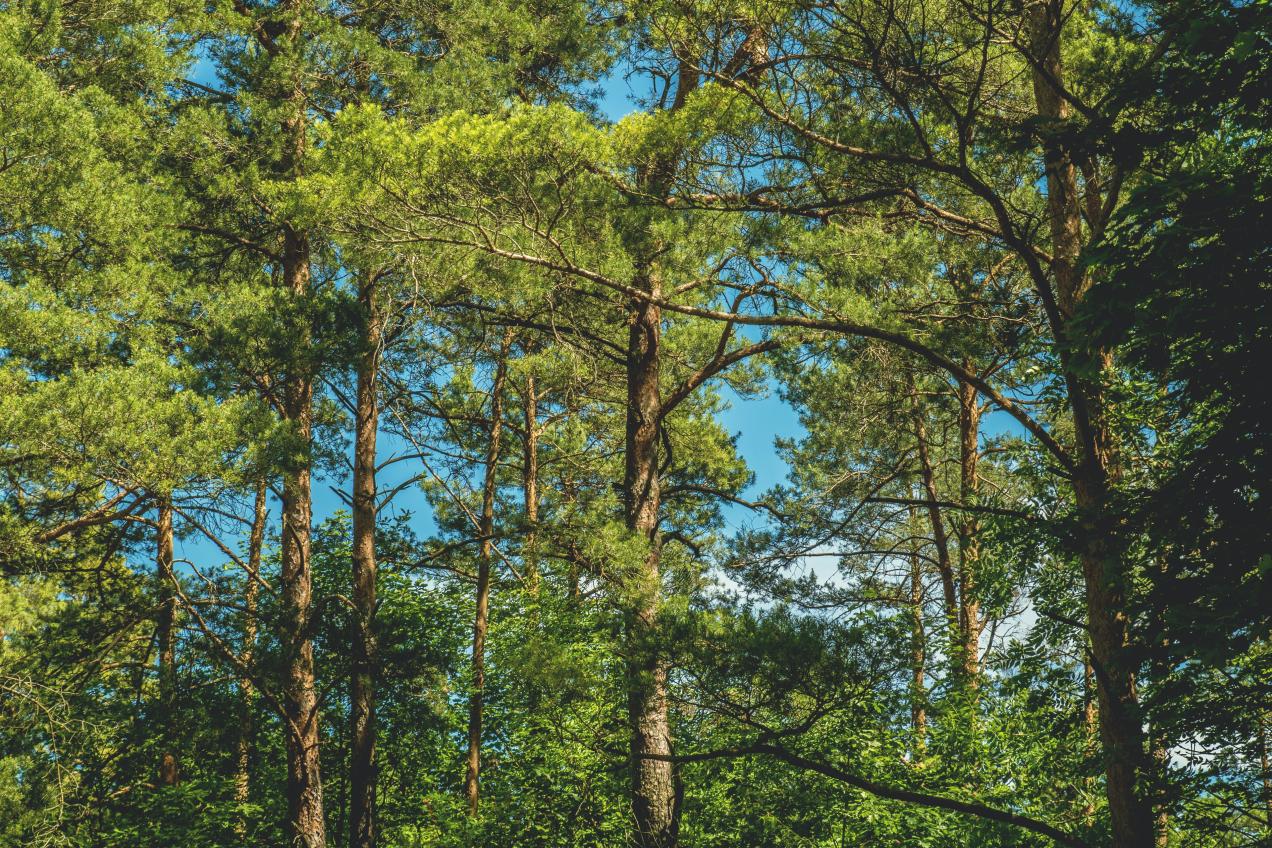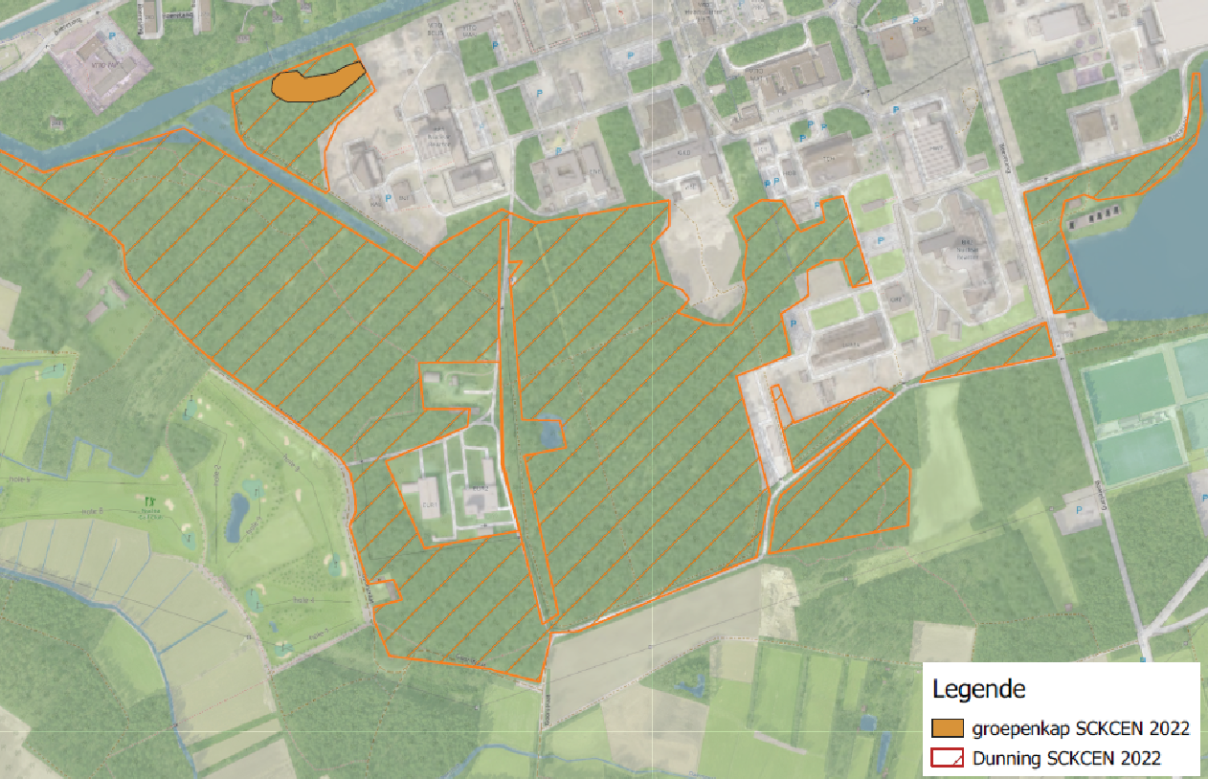Another step closer to MINERVA
During the coming weeks, a significant number of trees on the SCK CEN domain will be marked by a bright-coloured line (= marking). The marking means that these trees will be cut down in the near future.


The first MINERVA licence
Felling on the domain is linked to the first MINERVA licence. We expect that we will receive the licence during the second quarter of 2023. Felling will start during the third quarter. Approximately 2.5 hectares of the forest will be cut down.
This felling area starts from the MINERVA zero point and runs approximately 200 m in a westerly direction between the road and the back of the HOB unit and the LHMA car park. The felling as such will only take a few weeks.
A resilient and biodiverse forest
You will find marked trees not only on our site but also around the fence. Thinning will also take place in that part of the forest domain. We want to retain the forest climate at all times and we aim to achieve a positive forest balance by means of this process. Did you know that the (calculated) thinning of the forest is not necessarily negative but that it also provides many benefits?
- The forest thinning is an opportunity to remove invasive exotic trees such as the American Bird Cherry trees. The indigenous tree species are always privileged and therefore left to live another day - as a result, they are not marked!
- The trees then have more space to grow.
- Thinning also provides more light, which benefits the herb layer and promotes forest rejuvenation.
- This generates additional income. The income is always used for other Nature Management Plan objectives (Natuurbeheerplan). Incidentally, only the trunks are removed for the sale of the wood. The treetops are left on site because dead wood is extremely valuable for the forest's ecosystem.
"We want to use thinning to achieve a varied, strongly structured forest containing many indigenous deciduous trees," says Staf Bosch. The aim is an "Oak-Beech forest" on acid soil or an "Old Oak-Birch forest on extremely nutrient-poor sand”. "Fixed clearing routes are provided for the woodcutter so that any damage to the forest floor is restricted to a minimum," concludes Staf.
